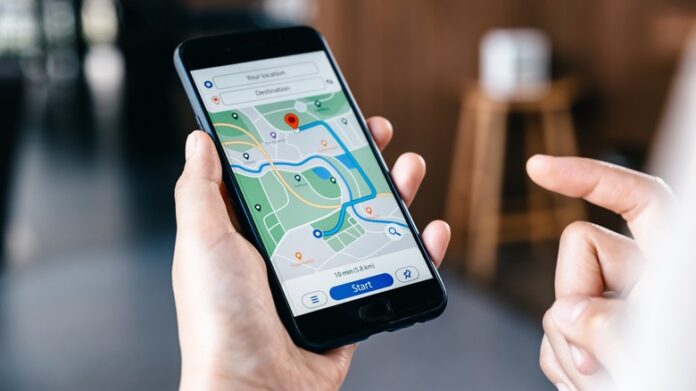Traveling from the vibrant city of Miami to the bustling streets of New York presents various transportation options, each with its own set of advantages and drawbacks.
No matter which speed of air travel you prefer, the scenic route by train, or the flexibility of driving, understanding these options can help you plan a smoother trip.
This article delves into the main modes of transport from Miami to New York, offering insights into their pros and cons to aid your travel planning.
Bus Travel: Economy and Accessibility

Traveling by bus might not be the first option that comes to mind for a long-distance journey like Miami to New York, but it presents an economical and accessible choice. Companies like La Cubana Xpress and Megabus offer routes between these cities, with travel times typically ranging from 24 to 30 hours depending on the service and route.
Pros of Bus Travel
- Affordability: Bus travel is usually the most budget-friendly option, often costing significantly less than flights or train tickets.
- Direct Routes: Services often run directly between major cities without the need for transfers, offering convenience despite the longer journey time.
- Inclusive Travel: Buses can accommodate more luggage without hefty fees and are generally accessible to people with mobility issues.
Cons of Bus Travel
- Comfort Levels: Buses offer limited space and amenities, which might be challenging during such a long journey.
- Variability in Service Quality: The experience can greatly depend on the bus company, with some offering more modern and comfortable buses than others.
- Extended Travel Times: The journey duration is usually the longest among public transport options and can be further extended by road traffic.
Air Travel: Speed and Efficiency at a Cost

Air travel is perhaps the fastest way to traverse the approximately 1,300 miles separating Miami and New York. Numerous airlines operate flights between Miami International Airport and various airports in New York, including John F. Kennedy International Airport,, and Newark Liberty International Airport. A non-stop flight typically lasts around three hours, making it a highly time-efficient option.
Pros of Air Travel
- Time Efficiency: For travelers looking to save time, flying is the most expedient choice.
- Accessibility: With frequent flights available, travelers can find options that best fit their schedule.
- Additional Services: Airlines offer various classes of service to cater to different comfort and budget levels.
Cons of Air Travel
- Cost: Flying is generally more expensive than other modes of transportation, especially if booking last-minute.
- Airport Delays: Airports are prone to delays due to weather, security issues, and other unforeseen events.
- Travel to and from Airports: Getting to and from airports can be time-consuming and costly, particularly in cities like New York where traffic can be heavy.
Road Trip: Flexibility with Scenic Views
Driving from Miami to New York offers a unique opportunity to experience the diverse landscapes and cities along the Eastern Seaboard. The journey can take anywhere from 18 to 24 hours, depending on traffic, weather conditions, and stops along the way.
Pros of Road Travel
- Flexibility: Driving allows you to set your own pace, choose your route, and make stops as desired.
- Scenic Route: The drive north offers picturesque views, especially along routes like the I-95 corridor which passes through historic cities and coastal towns.
- Cost-Effective: When traveling as a group, driving can be more economical than buying individual plane tickets.
Cons of Road Travel
- Fatigue: Long hours on the road can be tiring, especially for the driver.
- Unpredictability of Traffic: Traffic jams can significantly extend travel time, particularly near major cities.
- Vehicle Wear and Tear: The long distance can put significant strain on your vehicle, potentially leading to maintenance issues.
Train Travel: Comfort and Convenience

Amtrak offers several routes connecting Miami to New York, including the Silver Service/Palmetto line which provides a direct connection between the two cities. The journey takes approximately 24-28 hours, offering a blend of comfort and scenic views without the stress of driving.
Pros of Train Travel
- Comfort: Trains offer more legroom and the ability to move around, which can be particularly beneficial on longer journeys.
- Scenic Views: The train route includes views of the Atlantic Coast and various urban and rural landscapes.
- City Center to City Center: Trains typically connect downtown areas, reducing the need for additional transportation upon arrival.
Cons of Train Travel
- Travel Time: While more comfortable, trains take significantly longer than flights.
- Scheduling: Unlike flights, trains have fewer daily services, which can limit flexibility.
- Cost: Depending on the type of service and booking time, train tickets can be as expensive as or even more expensive than flights.
Car Rentals: Customized Travel Experience

For those who prefer not to put miles on their own vehicle or who don’t own a car, renting a car is a viable option. This choice combines the flexibility of driving with the convenience of using a well-maintained vehicle suited for long distances.
Pros of Car Rentals
- Choice of Vehicle: Renters can choose a vehicle that fits their specific needs, whether it’s fuel efficiency for a long drive or a luxury model for a more comfortable journey.
- No Wear on Personal Vehicle: Renting avoids the wear and tear that such a long trip can inflict on a personal vehicle.
- Roadside Assistance: Most rental agencies offer roadside assistance, which adds an extra layer of security when traveling far from home.
Cons of Car Rentals
- Cost: While you avoid wear and tear on your own vehicle, the rental costs, especially for one-way rentals, can be high.
- Insurance and Liability: Understanding and opting for the right insurance coverage can be complex and often adds a significant amount to the rental cost.
- Drop-off Charges: One-way rentals can incur hefty drop-off fees, which may dramatically increase the overall cost of the rental.
The Role of Technology in Travel

Advancements in technology have significantly transformed how we plan and experience travel. From GPS navigation to mobile apps that update on traffic conditions, technology aids in making informed decisions and eases the stress of travel.
Apps like Waze or Google Maps provide real-time traffic updates, helping drivers avoid congested routes and minimize travel time. Meanwhile, airline and train apps offer mobile ticketing and real-time scheduling updates, which enhance convenience and help manage itineraries effectively.







